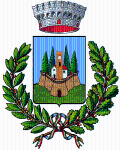Descrizione
Fin dall’XI secolo si hanno tracce del villaggio aperto di Arceno, che nel XVII secolo divenne proprietà della famiglia senese Grisaldi del Taja; nel 1833 la famiglia Piccolomini Clementini acquistò la tenuta e commissionò ad Agostino Fantastici la ristrutturazione della villa e successivamente la costruzione del grandioso parco.
Dell’antico insediamento troviamo menzione già dal 1024 nel Cartulario della Berardenga: “in villa e districto de Arceno”. Lo stesso cartulario nel 1056 cita la Chiesa di San Giovanni e dal 1114 anche la chiesa di San Pietro. Nella Tavola Possessioni al 1318, Arceno è censito con 5 case, mentre nel 1366 e 1367 partecipa al Castro Novo e alla prima comunità di Castelnuovo. Nel 1692 è podere del comunello di S. Gusmè proprietà del Taia e nel 1777 editto leopoldino, risulta comunello a se stante ( il n° 36 dell’elenco)
Le notizie nei secoli che hanno preceduto la costruzione della villa, che comprende anche le scuderie, le cantine, i locali adibiti a fattoria e un vastissimo parco con al centro un lago artificiale. Attualmente non rimangono vestigia antiche dell’originario complesso, in quanto tutta la villa d’Arceno, come possiamo ammirarla oggi, sorse ex novo sul finire del XVIII secolo per volere del cavaliere Flaminio Del Taja.
Dopo la famiglia Del Taja, la proprietà passa ai Piccolomini Clementini, dai quali è stata dotata di un bellissimo giardino romantico progettato da Agostino Fantastici, riuscito esempio di giardino pittoresco all’inglese. Un tempo si potevano notare gli edifici del porticciolo, la casa delle barche posta al limite del lago, la grande voliera e il tempietto neoclassico con la statua di Pandora. Elementi ancora perfettamente riconoscibili e da qualche tempo oggetto di alcuni interventi, tipo la ripulitura di percorsi e delle zone adiacenti i vari monumenti o edifici; il viadotto è invece crollato, mentre il porticciolo è attualmente da restaurare.
La villa ha pianta rettangolare, sviluppata su tre piani e conclusa da una copertura a padiglione al centro della quale si eleva la torre colombaia. I fronti nord e sud sono caratterizzati da un corpo centrale a tre arcate sovrapposte su tutti e tre i livelli. Quasi tutti gli elementi decorativi sono realizzati in stucco e creano un sapiente contrasto cromatico con le superfici a intonaco bianco.
Al piano nobile dell’edificio si trova un ampio salone sul quale aprono le porte delle varie stanze. L’ultimo piano, riservato alla servitù, è raggiungibile mediante una scala a chiocciola in pietra, che mette in comunicazione tutti i piani e termina con un lucernaio cilindrico. Sotto la villa si snoda un piano sotterraneo (il più antico) collegato ai fabbricati annessi dove sono ubicate le cantine.
L’intero complesso è stato oggetto di un intervento di restauro che ha permesso dopo molti anni di abbandono il recupero della sua funzione come centro amministrativo della vasta tenuta vinicola. Rimane tuttavia in stato di abbandono il giardino.
English version:
There are known traces of the village of Arceno from as early as the 11th century. In the 17th century, it became the property of the Sienese Grisaldi del Taja family, and in 1833 the Piccolomini Clementini family acquired the estate and commissioned Agostino Fantastici to renovate the villa and later to construct its grand park.
We find the settlement mentioned in the 1024 Cartulary of Berardenga: “in the villa and district of Arceno”. In 1056, the same cartulary cites the Church of San Giovanni, and from 1114 on, the church of San Pietro as well. In the 1318 List of Possessions, Arceno is noted as having 5 houses, while in 1366 and 1367 it was included in the Castro Novo registry and the earliest community of Castelnuovo. In 1692 it was a farmhouse of the common of S. Gusmè owned by the Taia, and in the 1777 Leopoldian edict, is indicated as a common in itself (n. 36 on the list).
That much is known from the centuries preceding the construction of the villa, which also comprised stables, wine cellars, farm buildings and a very large park with an artificial lake in the middle. No vestiges remain of the original antique complex, as all of Villa Arceno as we see it today was built at the end of the 18th century according to the wishes of Cavaliere Flaminio Del Taja.
After the Del Taja, ownership of the property passed to the Piccolomini Clementini family, who put in a beautiful romantic garden designed by Agostino Fantastici, a wonderful example of a picturesque English-style garden. At one time there were structures, including a little “port,” a boathouse on the edge of the lake, a large aviary and a neoclassical tempietto with a statue of Pandora. Several elements are still perfectly recognizable today and have been the object of renovations, such as the clearing of paths and areas alongside various monuments and building; the viaduct collapsed, however, and the little port has yet to be restored.
The villa has a rectangular, three-level plan and a pavilion-style roof with a dovecote tower rising from the center. The northern and southern façades have central blocks with three arcades on the three levels. Nearly all of the decorative elements are in stucco, creating a clever color contrast with the white-plastered walls.
The building’s “noble” floor has a large salon onto which the doors of various rooms open. The top floor, reserved for servants, is accessible via a stone spiral staircase, which links all three floors and ends with a cylindrical skylight. Beneath the villa is a basement (the oldest part of the structure) linked to annexes that host the wine cellars.
After many years of neglect, the entire complex was the object of a renovation that allowed for the recuperation of its function as the administrative center of a vast wine estate. The garden, however, is still overgrown and abandoned.
Modalità d'accesso
sempre aperta
Indirizzo
Punti di contatto
Ultimo aggiornamento: 4 marzo 2024, 13:07

